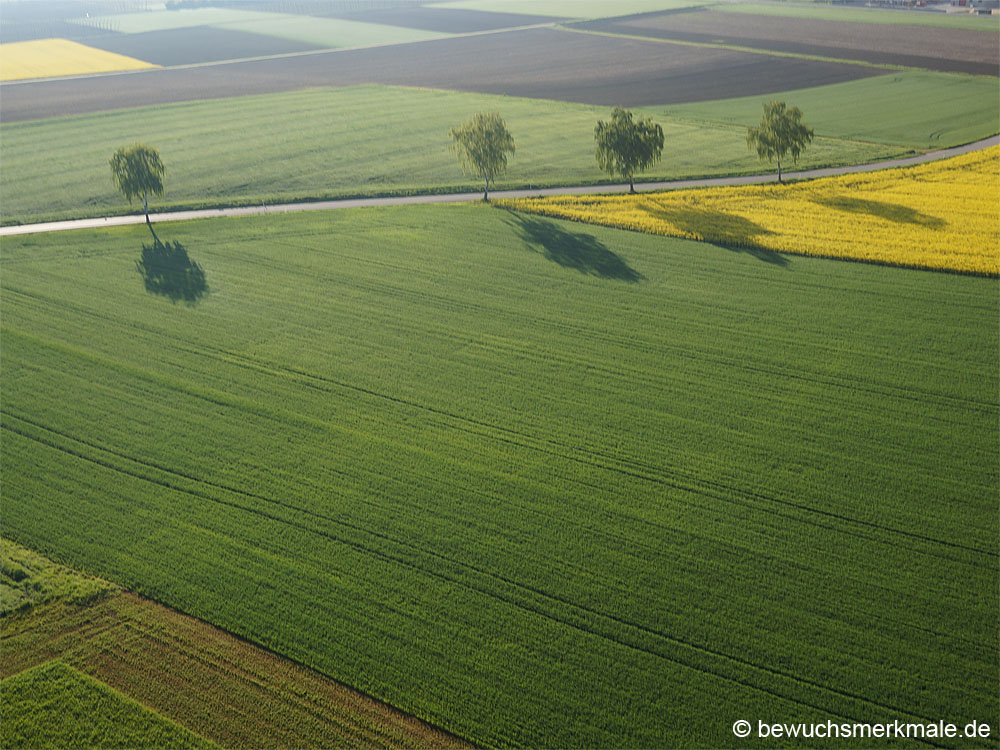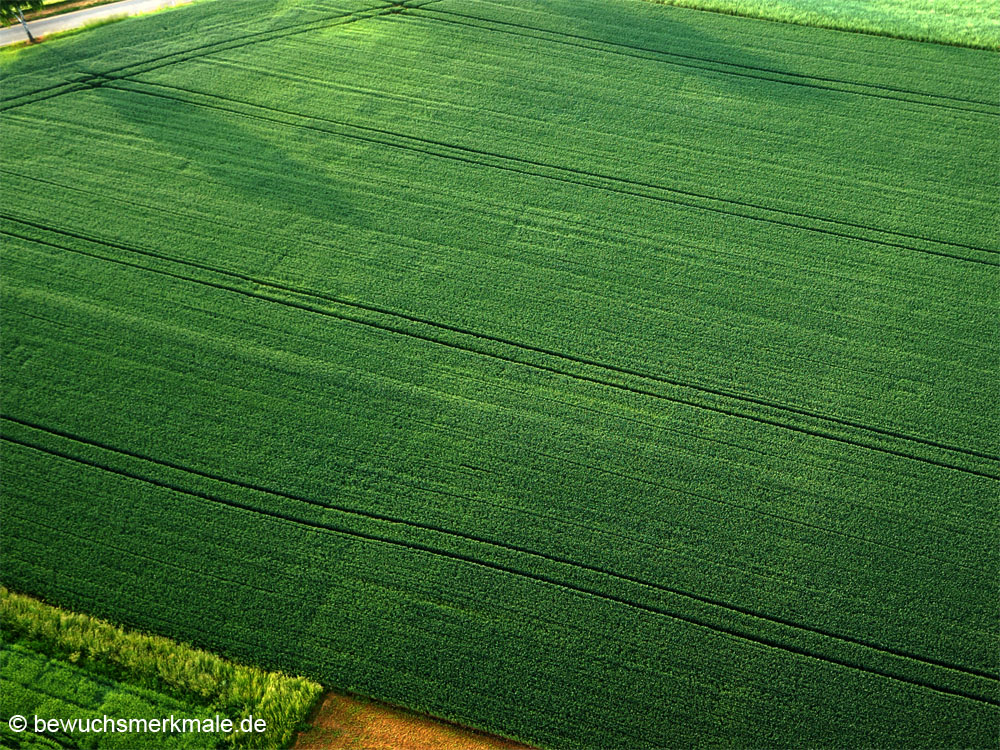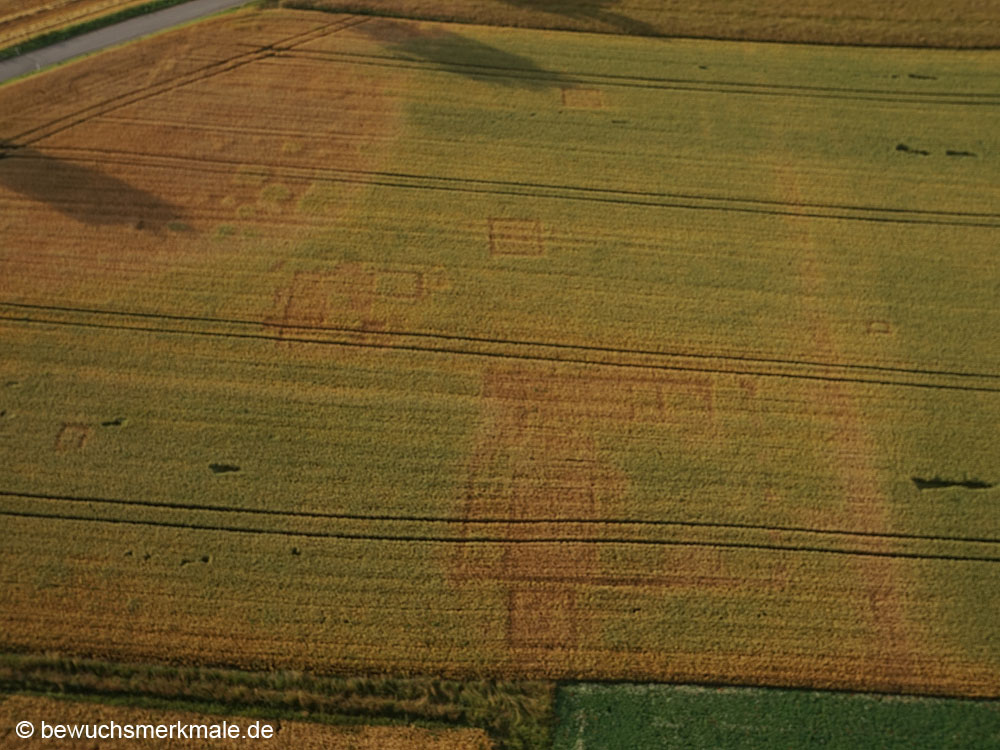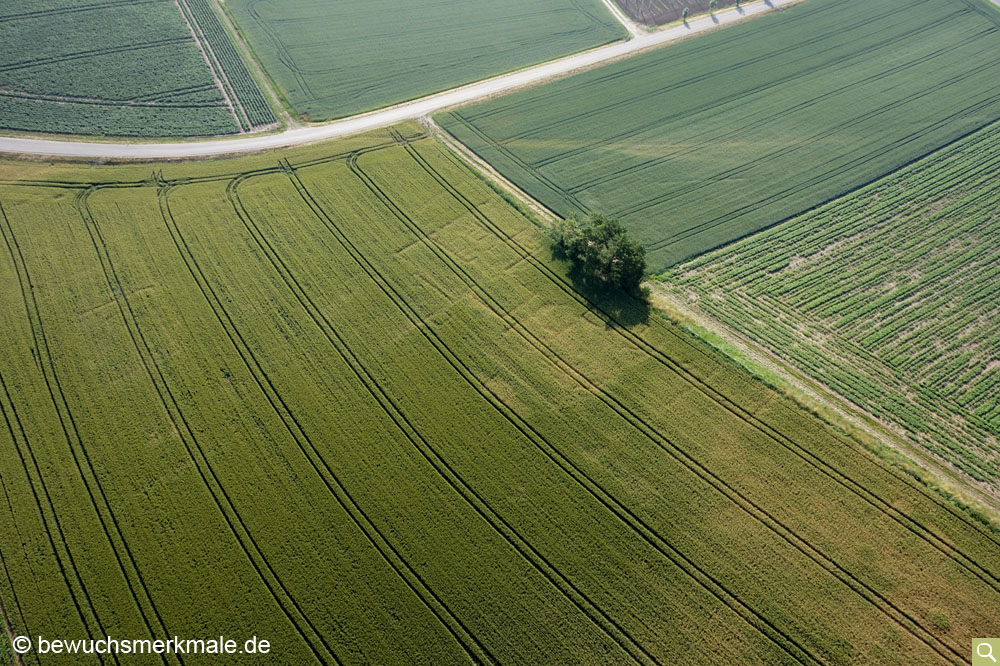Pförring fort vicus
In the dry early summer of 2017, the eastern part of the Roman civilian settlement (vicus) of the well-known fort of Pförring (Celeusum) was revealed by crop marks in a wheat field. The formation of the vegetation features was impressively documented by multiple flights in the course of the early summer.
During the first aerial survey on 11.05.2017, the first slight discolouration features were already visible. The plants above some buildings and a street stand out from the rest of the plants with a lighter green leaf. Some foundation walls of stone buildings are visible as slightly deepened lines.



Addendum 2018: As the early summer of 2018 again offered good conditions for vegetation features due to its dryness, the fort vicus was surveyed again. The area described above did not produce any vegetation features in 2018, but on 11.06.2018 parts of the vicus development on the south-eastern side of the fort were revealed as negative vegetation features in the rye field, which was ripening.

